
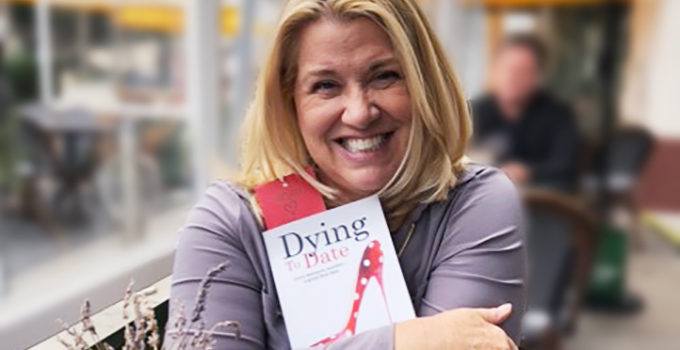
Cushing’s Disease Helped Shape My Wonderful Life
by Sharmyn McGraw
Now twenty-one years in remission from a pituitary adenoma tumor, Sharmyn McGraw, patient advocate, author, artist, and so much more, talks about the pivotal role of Cushing’s disease in her life. From dyslexia to writer and everything in between.
Dealing with a life threatening disease, can make you feel like a different person and your life can be forever changed. For me, it was all for the better. After my minimally invasive pituitary surgery for Cushing’s disease, with Dr. Daniel Kelly, in April 2000, I started advocating for those affected by pituitary tumors and related hormonal disorders.
My Cushing’s disease experience
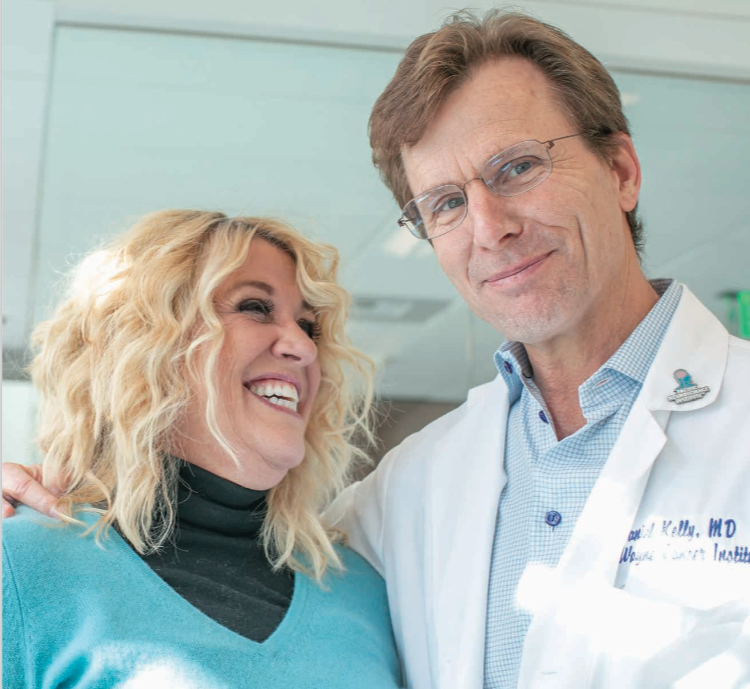
In the early years, all I had was my personal experience with Cushing’s disease, and it was a powerful experience. After dealing with all the medical mistakes that were made, and all the years of horrible health and poor quality of life, Cushing’s disease and the lack of education in our medical community needed to be exposed. The only one paying the price for the costly medical bills and misdiagnosis was me. It was a big price to pay, and I wanted to share it with others, with hope they would receive a timely diagnosis and proper treatment. There were a lot of changes needed in the diagnosis and treatment of pituitary disease, and things needed to change. So, my goal has always been to share information for proper medical treatments, a few personal experiences, and plenty of encouragement for patients to take their lives back after treatment.
Now, twenty one years later, things still need to improve, but I am proud to say, I have helped move the golf ball one inch closer to the sun. As bad as it was to have Cushing’s – and it was awful – I wouldn’t change it. Looking back, I’m grateful, Cushing’s disease did threaten my life, and change me, but it was all for the better.
A bit about me
I had a rough start in life but always had a fascination for the arts. Growing up, I had a hard time with reading, writing, math, and I dreaded school. My high school had over fifty two hundred students and I had no problem squeaking by unnoticed. So at fifteen years old, I couldn’t read or write above a fourth-grade level. One teacher asked unhelpfully, “Why is it that someone with such beautiful penmanship has such horrible grammar and spelling?”
A diagnosis of dyslexia
In college I knew that there was definitely something wrong with me. My brain didn’t process information well and I knew it. Then I learned about dyslexia and a friend recommended I get tested. I was diagnosed with severe dyslexia and the experts reported it was remarkable how well I’d done through the years with no support. They considered me, highly functioning, high IQ, severely dyslexic. The diagnosis was a relief, however I needed to figure out how to learn differently than most people.
Finding a supportive teacher
I loved reading mysteries and thrillers and I loved writing stories. One semester I took a creative writing class. It was my favorite class, and although I completed every assignment, I never turned them in. Half way through the semester, my teacher told me I would not pass if I wasn’t turning in my assignments. I couldn’t breathe, I felt like I was going to faint, because my deepest secret had to be told. So, I did it. Through my tears, I told her about my dyslexia. My teacher assured me, she wasn’t there to judge, and no one, other than her, would read my stories. I handed her all my assignments. Then I went to the restroom and threw up. When we met later she said, “Although your spelling is far from perfect, and your grammar is not good, your stories are wonderful! You have a talent for telling stories.” That was in 1980. My teacher gave me hope and I continued to dream about writing mysteries.
An unknown disease takes over
My career path ended up in outside sales. I was a people person, and it turns out I have a knack for developing loyal, long-lasting relationships with clients. I continued to do well in sales, but my real passion was painting, writing, photography, anything I could do to create something. I loved it and was good at it.
But in 1993, at thirty-one years old, I began having unexplainable weight gain and constant nervousness. I was a fit, athletic woman. I wore a petite dress size two and weighed 120 pounds, had strong muscles, and body fat at eleven percent.
Soon there were more unexplained symptoms; my thick long blonde hair fell out by the handful. I had a red rash over my moon face, and a buffalo hump on the back of my neck, and in one year, I had gone from a dress size two to a size 22—barely able to walk upstairs. When I looked in the mirror, I didn’t recognize myself. I had always been the girl in the gym, a picture of health. I had been a flight attendant in the eighties, and was always at least thirty pounds below weight restrictions. But by the end of 1994, I had a laundry list of serious health issues, and yet doctor after doctor was adamant, there was nothing medically wrong. Just exercise more and eat less. That was their sage medical advice to a woman begging them to help her. I looked like I should have been on the cover of a Cushing’s Patient medical journal.
Finally a diagnosis of Cushing’s disease
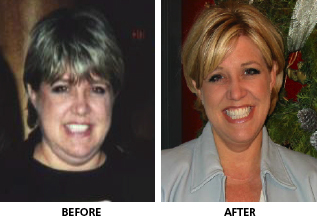
It took seven challenging years before I got a proper diagnosis. It was a grim time in my life, but I grew as a person, and I learned I was stronger than I gave myself credit for and I found that I had a lot to offer the world. The prolonged diagnosis was inexcusable but yet it helped define my course in life for the better, just like dyslexia had.
In 1999, I diagnosed myself with Cushing’s disease. As there was no Google in those days, I researched my past medical records and searched keywords on the Internet. Eventually, I came across an article published by an advocacy group, The Pituitary Network Association, who are still doing wonderful things to help patients. I remembered reading on one of my reports from a well-known medical center that they had ruled out Cushing’s disease. Sadly, they had not properly tested me four years earlier and missed the diagnosis. Many other doctors after reading the report trusted that the medical center was right and never questioned it.
But some things in life, I believe are truly meant to be. Had one piece of this puzzle been different, I would not have met Dr. Daniel Kelly and Dr. Pejman Cohan, my neuro-endocrine team of heroes that ultimately helped to change everything about my health and quality of life, for the better.
Becoming a patient advocate
After my pituitary adenoma surgery, I was relentless about raising awareness. I wanted to understand why so many highly respected medical professionals were so uneducated about pituitary tumors. So, after my surgery, when I hugged Dr. Kelly goodbye and thanked him for saving my life, he said, “Stay in touch,” and I did just that. I emailed him questions, read every piece of literature he’d written, I asked more questions, but instead of getting rid of me, he helped me. He invited me to medical conferences where I listened to the speakers and took notes to discuss later with him and Dr. Cohan. I got to sit in on neuro-endocrine board meetings and listen to endocrinologists and neurosurgeons discuss patients’ diagnosis and treatment.
I listened and learned, and figured out what the biggest problem was. Doctors were historically taught that Cushing’s disease was extremely rare and many doctors believed they would never see a Cushing’s patient in their practice. No one was learning from the patients, so they didn’t understand the actual disease. Still today, most doctors have a limited personal perspective about the disease. I figured out there was a huge gap between the medical community and the patient’s experience. Dr. Kelly saw the potential in my advocacy work. Not only through my patient experience with Cushing’s, but with the help of the Internet, I met hundreds of pituitary patients. I knew the patients’ personal struggles, not just from a text book or a medical study.
Spreading Cushing’s disease awareness
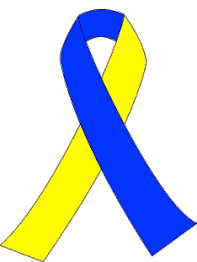
blogspot.com
Soon I had the confidence to really start making an impact. It was time to get the attention of the public. I wanted to let people know pituitary tumors were one of the best kept secrets in medicine and it was time to get the word out about this misunderstood, under-diagnosed disease.
One of the first things I did was select the colors for a Cushing’s disease awareness pin. I chose yellow and royal blue because at the time, those were the colors of the university medical center where I had my surgery with Dr. Kelly. I glue-gunned hundreds of yellow and blue ribbons together and fastened a safety pin on the back. The next thing I did was write a brochure about Cushing’s. It was a trifold flier and I typed it in WordPerfect software. I cut and pasted photos, the old fashion way, with scissors and glue. I met with Dr. Kelly one afternoon at the hospital while I was visiting a patient I had referred to him with Cushing’s.
Advocacy takes over
The anxiety at the thought of people reading what I’d written felt debilitating, but I wanted to help raise awareness. So I took a deep breath and got the nerve to ask Dr. Kelly to look at my brochure. I asked him to check my spelling and see if I made any mistakes with the medical information. He suggested minor changes, and was kind and supportive. He made me feel proud of what I was doing to help others.
I could only afford to print a few color copies, and did the rest in black and white. I left stacks of the brochures everywhere, along with a Cushing’s, yellow and blue awareness pen stuck on the front. I gave the flier to anyone who would take it. This one little flier was passed around the country by hand, not over the Internet. Before long, patients were calling me from all over the U.S. In those days, we didn’t have cellphone plans like today and I often had phone bills over three hundred dollars a month from speaking with people about Cushing’s across the country. Everyone, wanted more information, because they either thought they had Cushing’s or knew someone who looked like they had it. Truthfully, I couldn’t afford the added cost for everything I was doing to get the word out. But I was helping many people finally get proper treatment. So, I worked harder and cut back financially for any of my personal needs and continued to help strangers, who often became my dear friends. When I was invited to speak at a conference, I’d have to use my vacation days at work to attend the meeting. I sacrificed a lot, but it was all worth it.
It’s been my biggest blessing in life to help make many people’s lives better. Through the newly available dial-up internet, I joined forces with a small group of wonderful Cushing’s advocates. Cathy Gifford and Mary O’Connor, were my first Cushing’s friends, and are still dear friends twenty one years later. Together we got things moving. Mary, has built the largest Cushing’s support boards, and her admirable dedication continues to help and support patients from all over the world, Cushing’s Help and Support (cushings-help.com).
Becoming a writer for the Cushing’s cause
It was time to do more, and time to get over my fear of writing. At a local college, I took a class on how to write articles for print publications. My instructor loved my story and helped me send out thirteen query letters to women’s magazines, asking them to consider printing an article about my journey with Cushing’s disease. Before long, twelve rejection letters trickled in. Then one day, the health editor from Woman’s Day magazine called me and asked if she could still buy my story.
My excitement was hard to contain. The editor said they’d have one of their staff writers interview me and write the story. But out of nowhere, I said, “I’m a writer, can I write it?” I was shaking, and was sure I’d blown the deal, and one hundred percent sure I was out of my mind.
But there are some things in life that are just meant to be, and they shape your life for the better. She agreed and said I could write the article. When I hung up the phone, I wasn’t sure if I was more happy that my dyslexia wasn’t stopping me from my dream of being a writer or if ten million people were going to read about Cushing’s disease. Both were equally fantastic! Immediately, I called Dr. Kelly’s cell phone. He was going into surgery but took my call. He was so proud of me, I wanted to cry. Dr. Cohan, couldn’t have been happier for me too. I dealt with major anxiety but turned in my twenty five hundred word article, before my deadline. The health editor had me clarify a couple things and that was it. She said, I did as well as any of her experienced writers.
The day the article released, an international women’s magazine contacted me for another article. People that read the article were contacting me in droves. The response was overwhelming. More patients were finally getting a diagnosis and proper treatment. The Cushing’s awareness momentum continued, with television, speaking engagements, and more articles.
A slip up
And twenty one years later, I continue to work closely with my dearest friends, Dr. Kelly and Dr. Cohan, with the longest running Pituitary Disorders Patient Support Group. Even after a tiny spelling error led to a mortifying result.
I sent out six hundred fliers inviting Dr. Kelly’s patients and colleagues to join us at an awards dinner where Dr. Kelly was being honored with the Gentle Giant award. But I wrote, Genital Giant award. Yep. That’s why dyslexic people need editors.
But bad spelling aside, I’m blessed to be part of the Pacific Neuroscience Institute team where I continue to help patients.
Writing on my own terms
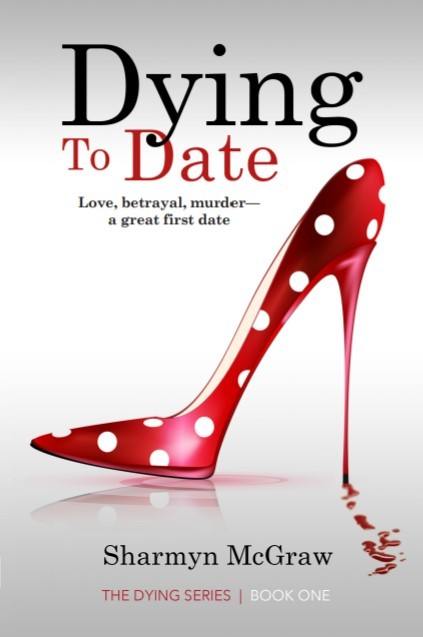
But it was also time for me to write the mystery series I’d always wanted to write. It was a challenge, but—I did it! Writing Dying to Date: Love, betrayal, murder—a great first date, was the most fun I’ve ever had and I am having a blast working on book two: Dying to Marry: Six lovely bridesmaids —and then there was one. And book three: Dying to Divorce: A good man is hard to find—and harder to hide his body, will be coming soon.
I’m proud of my hard work and I’m proud of being a Cushing’s disease patient advocate. I’m a dyslexic, published mystery writer, with a fantastic editor who has a lot of patience. I’m a person in remission from Cushing’s disease with an endocrine team that I respect and adore.
Getting to dedicate my first novel to my heroes, Dr. Kelly and Dr. Cohan, was my dream come true. I’m forever grateful. The darkest parts of my life led me to my bright, wonderful future.
I love you, Dr. Kelly and Dr. Cohan. Twenty one years Cushing’s-free. I couldn’t have done it without you!
Sharmyn
I dedicate this book to my heroes who helped get my health back and my life back as well.
Dying to Date: Love, betrayal, murder—a great first date
“Pituitary Tumors—The Best Kept Secret in Medicine.”
Studies show pituitary tumors and related hormonal disorders affect 1 in 5 adults.
For more information on brain, pituitary and skull base tumors:
Daniel F. Kelly, MD, President & CEO, Pacific Neuroscience Institute Foundation; Pejman Cohan, MD, Specialized Endocrine Care Center.
Sharmyn McGraw
About Dr. Daniel Kelly

Dr. Daniel Kelly, a board-certified neurosurgeon, is the Director and one of the founders of the Pacific Neuroscience Institute, Director of the Pacific Brain Tumor Center and Pacific Pituitary Disorders Center, and is Professor of Neurosurgery at Saint John’s Cancer Institute at Providence Saint John’s Health Center. Considered to be one of the top neurosurgeons in the US, he is a multiple recipient of the Patients’ Choice Award, and has been awarded the Southern California SuperDoctors distinction 15 years in a row.
About Dr. Pejman Cohan

Dr. Pejman Cohan is a board certified endocrinologist and an expert in the diagnosis and treatment of patients with pituitary tumors and related hormonal disorders including functional pituitary tumors (acromegaly, Cushing’s disease, prolactinomas, TSH-secreting adenomas), non-functional pituitary adenomas, craniopharyngiomas and Rathke’s cleft cysts. He has extensive experience in the management of pituitary hormonal failure (hypopituitarism) after traumatic brain injury, radiotherapy and surgery and is an expert in diabetes and other metabolic disorders.
Useful Links
About the Author
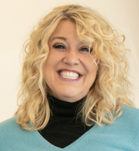
Sharmyn McGraw
Sharmyn McGraw is a patient advocate, charismatic professional speaker and published author. She has first-hand experience as a Cushing’s disease survivor and often collaborates with nationally-recognized neuro-endocrine experts, sharing the speaker’s platform while educating patients and doctors about neuroendocrine hormonal disorders and their impact on our health as a nation. Sharmyn facilitates the largest pituitary patient support group in the country for the Pacific Neuroscience Institute.
Last updated: April 7th, 2021
